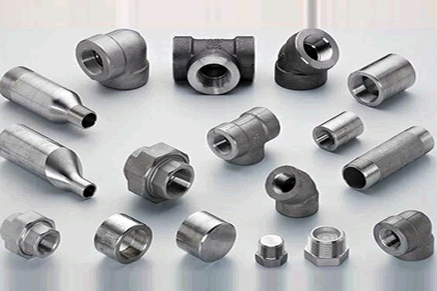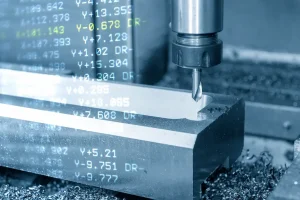Blog entry by rweret erwert

Also referred to as a 4-axis CNC mill or 4-axis CNC router, it is a computer numerical control machine that can move its tooling in four directions: up and down, left and right, and forward and backward. This allows it to create three-dimensional objects by cutting away material from a block of material. This can also help to develop four-sided objects from flat material.
The 4th axis of a 4-axis machine is used to rotate the workpiece around its vertical axis. This allows for more complex shapes to be machined. The machine typically rotates around a vertical axis in the center of the machine. The 4th axis of a four-axis machine will typically have speed control, which is similar to the tool changer on a CNC milling machine.
Each axis of the machine is controlled by its own controller (like a router) that can perform different operations based on instructions sent over a communications link. In addition to moving, the axes can also hold a workpiece in position with rapid-clamping systems while the robot arm performs an operation.
4-axis milling machines generally have more power and higher accuracies than 2-axis or 3-axis machines. The increased accuracy can be attributed to the movements of the fourth axis which rotates around the vertical axis, which gives it a 360-degree range of motion.
The dimensions of a 4-axis CNC machine are typically around 3-4 feet wide, 5-6 feet deep, and 7-8 feet tall. They are much larger than 3-axis machines, which usually have a footprint of only 6-8 feet by 3-4 feet.
Types of 4-axis CNC Machining
There are many types of 4-axis CNC machining, but the two most popular are indexing and continuous.
Essentially, indexing means holding your part stationary while the tool rotates along the fourth axis. The process of indexing allows you to reach areas that would otherwise be difficult or impossible to access with a traditional setup.
Continuous machining simply means that there is no downtime, which means a single piece of stock can be cut over and over again while the machine is running. The device can cut material simultaneously with the A-axis rotation.
There are also hybrid types of 4-axis CNC that combine the benefits of both 2- and 3-axis machining. In these cases, the components will be cut on one axis and then moved to a second axis for milling or drilling.
The Benefits of Using a 4-Axis CNC Machine
A 4-axis CNC machine is a great investment for businesses that want to improve their production process. A 4-axis CNC machine can handle more complex shapes and designs, which can speed up the production process. The following are the benefits that a 4-axis machine provides:
1. Increased accuracy and precision
A CNC 4-axis machine can produce more accurate and precise results than a 3-axis machine because it can move in four directions (X, Y, Z, and A). This allows for greater control over the cutting process and more flexibility when machining complex shapes.
2. Less risk of human error
Because all axes are controlled by the same computer, operators can easily and accurately make corrections without interfering with each other’s work.
3. Novel design concepts
A 4-axis machine can produce designs that have never been possible with a 3-axis machine. You can use this tool to make computer-generated models of objects or structures. You can also use it to design complex shapes and bring them to life as physical models.
4. It’s portable
A 4-axis CNC machine is not limited to one location. You can take it anywhere you need. A 3-axis machine may be limited to the size of the shop where it’s located.
The Cost of a 4-axis Machine
A CNC 4-axis machine can cost anywhere from a few thousand dollars to tens of thousands of dollars, depending on its size and feature. The cost of a 3-axis is generally less than a CNC 4-axis, but can also be much more depending on the machine’s configuration.
The Types of Projects Best Suited for 4-Axis CNC Machining
There are a variety of projects that are best suited for 4-axis CNC machining. One joint project is fabricating custom parts or components for machinery. This could involve creating replacement pieces to improve efficiency or performance. This could also involve creating parts that are required to complete the manufacturing of a appliance. Other common projects include 3D modeling and printing, making prototype or concept models, and the production of custom carvings such as hobby signs.
Another application of 4-axis CNC machining is fabricating custom tools or dies. This could involve creating a custom tool or die for a specific application or manufacturing process. For example, it may be necessary to create an eccentric tool or die to precisely finish a surface, such as the bottom of a gear. In this example, a 4-axis CNC machining center could be programmed to machine one side of the part, then rotate the part 90 degrees and machine the other side using the same setup.
Aerospace is also an area where 4-axis CNC machining is used. Typical aerospace machining involves turning, milling, drilling, and other processes. The high precision of this type of machining is particularly desirable for machining the many tiny gears used in aircraft and spacecraft.
Choosing Between 4-axis and 3-axis CNC Machining
There are a few factors to consider when choosing between 4-axis and 3-axis CNC machining:
- Parts precision and accuracy: 4-axis machines are typically more accurate than 3-axis machines. This is because it is easier to stabilize all three axes on a 4-axis machine.
- The complexity of the part: Complex parts are better suited for 4-axis machining because it allows for more movement and can create more complex shapes.
- Size of the part: Parts that are larger in size are better suited for 4-axis machining because they can accommodate the size of the part and produce a more accurate result.
- Durability: 3-axis machines are better suited for light-duty, higher-speed machining jobs. This is because it allows for a smaller cutter head and fewer vibrations that can occur during machining.
- Tooling: 3-axis machines are better suited for softer tooling like sanding belts, spindles, and drill jigs. This is because these types of tooling have more flex in them which can make the tooling more susceptible to fractures and bending.
Conclusion
The 4-axis machine is a powerful tool that can be used for a variety of purposes. It is important to understand the capabilities and limitations of this device in order to use it effectively. With the right knowledge, the 4-axis CNC machine can be a valuable asset in any workshop.
The choice between 4-axis and 3-axis CNC machining comes down to the complexity of the part to be machined and the desired level of accuracy. 4-axis machining can handle more complex parts with greater accuracy, while the 3-axis machining is better suited for simpler parts, more affordable, and easier to learn. Ultimately, the decision depends on the specific needs of the project.

